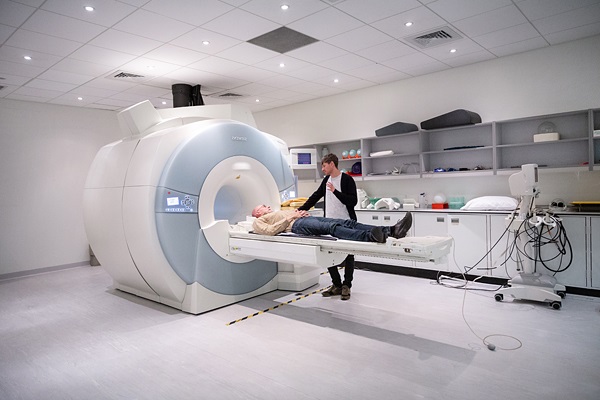Solar energy projects are initiatives that harness the power of the sun to generate electricity or provide other forms of energy. Solar energy projects are considered as a clean and renewable energy source because it does not produce any air pollution or greenhouse gases, it’s a sustainable and eco-friendly source of energy. The cost of solar energy has been decreasing in recent years and is expected to continue to decrease in the future, which makes it an increasingly viable option for meeting energy needs around the world.
Recent Development on Solar Energy
Solar panel efficiency: Researchers have been working to increase the efficiency of solar panels, which would enable them to generate more electricity from a smaller area. Recently, a new type of solar panel called a “tandem solar cell” has been developed that can convert up to 34.5% of the energy from the sun into electricity, which is a new world record for a single cell.
Solar windows: Scientists have been developing solar windows that can generate electricity while also allowing light to pass through. These are made of transparent solar cells that are laminated onto glass.
Floating solar farms: Floating solar farms are solar panel systems that are installed on bodies of water such as lakes and reservoirs. These systems have the advantage of not taking up valuable land and also can reduce evaporation and cool the water, which can improve the efficiency of the panels.
Solar-powered roads: Researchers are developing solar-powered roads that can generate electricity from the sun while also being durable enough for vehicles to drive on. These roads are made of solar cells that are embedded into the surface of the road.
Concentrated Solar Power (CSP): CSP systems are designed to collect and focus the sun’s energy to generate electricity. New developments in this field include the use of new materials and designs that allow the systems to generate more electricity, and also the use of thermal energy storage systems that allow the energy to be stored and used when the sun is not shining.
Bifacial solar panels: Bifacial solar panels are solar panels that can absorb light and generate electricity from both sides. This means that they can generate electricity not only from the sun but also from light reflected off the ground.
Photovoltaic (PV) solar projects
Photovoltaic (PV) solar projects are initiatives that use solar panels to convert sunlight into electricity. These projects can be large-scale, utility-grade installations that feed power into the electric grid, or they can be smaller, rooftop systems that provide electricity for a single building or residence.
There are several key components of a PV solar project. The most important of these is the solar panel, which is made up of a series of solar cells. These cells are typically made from silicon and are designed to convert sunlight into direct current (DC) electricity.
Inverters are another key component of a PV solar project. These devices convert the DC electricity produced by the solar panels into alternating current (AC) electricity, which can be used by most household and commercial appliances.
A PV solar project also includes a mounting system for the solar panels. This can be a simple rack that attaches to a rooftop, or it can be a more complex system of poles and tracking mechanisms that follow the sun’s movement across the sky.
The energy generated by a PV solar project can be used in a number of ways. In a grid-tied system, the electricity is fed into the electric grid and can be used by customers nearby. In a off-grid system, the electricity is stored in batteries for later use.
PV solar projects have many advantages. They are clean and renewable sources of energy that produce no emissions or pollutants. They are also relatively low-maintenance, and the cost of solar panels and other components has been declining in recent years, making them more affordable for a wide range of customers.
PV Solar projects are becoming increasingly popular worldwide, particularly in sunny countries like USA, China and many countries in Europe, Middle-East and Africa, for a wide range of applications including residential, commercial, industrial and utility-scale power generation.
Concentrated solar power (CSP) projects
Concentrated solar power (CSP) projects are a type of solar power generation that uses mirrors or lenses to concentrate sunlight onto a central receiver, where it is converted into thermal energy. This thermal energy can then be used to produce electricity.
There are several different types of CSP technology, each with their own unique features and advantages.
One type of CSP technology is called a parabolic trough system. These systems use long, curved mirrors to concentrate sunlight onto a central receiver tube, which contains a fluid that is heated by the concentrated sunlight. The fluid is then used to generate steam, which powers a turbine to produce electricity.
Another type of CSP technology is called a linear Fresnel reflector system. These systems use flat mirrors to reflect sunlight onto a central receiver, which again contains a fluid that is heated and used to generate steam.
A third type of CSP technology is called a power tower. These systems use an array of mirrors or heliostats to concentrate sunlight onto a central receiver located at the top of a tower. The concentrated sunlight is used to heat a fluid, which is then used to generate steam.
A forth type of CSP technology is the dish-engine systems, which use dishes to reflect sunlight onto a central receiver that contains a Stirling engine. The engine is then used to convert the thermal energy into mechanical energy which generates electricity.
CSP technology has some advantages over traditional PV solar power. One of the main advantages is that CSP systems can store thermal energy as heat in molten salt tanks, and this heat can then be used to produce electricity even when the sun is not shining. This makes CSP systems much more flexible than PV solar systems and enables them to provide power at any time of the day or night. Additionally, the high operating temperature of CSP systems allow to have a higher efficiency in generating electricity.
CSP technology is still more expensive than PV solar power on a per-watt basis and is mostly used in large-scale power generation projects. CSP plants are mainly found in arid or semi-arid regions of the world, such as the United States, Spain, and the Middle East, where the availability of sunlight is high and water resources are scarce.
Solar thermal projects
These projects use mirrors to focus sunlight onto a fluid, which is then used to heat a building or generate electricity. Solar thermal projects are initiatives that use the energy from the sun to heat a fluid, which is then used to produce electricity or provide heat for other uses. Solar thermal technology is similar to concentrated solar power (CSP) technology, but there are some key differences between the two.
Solar thermal projects can be divided into two main categories: power generation and heating.
For power generation, solar thermal technology uses mirrors or lenses to concentrate sunlight onto a receiver, where it is absorbed by a fluid, typically a heat-transfer oil. The heat from the fluid is then used to generate steam, which powers a turbine to produce electricity.
For heating, solar thermal systems use solar collectors to absorb the sun’s energy and transfer it to a fluid, which is then used to provide heat for a variety of applications, such as space heating, hot water heating, or industrial process heat.
Solar thermal projects can be used in a variety of settings, from large-scale power generation plants to small-scale residential or commercial heating systems.
One of the main advantages of solar thermal technology is that it can provide heat and electricity even when the sun is not shining. This is because the heat from the sun can be stored in a thermal storage tank, where it can be used to produce electricity or provide heat even when the sun is not shining. This makes solar thermal technology well suited for use in locations where the availability of sunlight is uncertain or where the demand for heat or electricity is highest during non-sunlight hours.
Another advantage of solar thermal systems is that they are modular in nature, which means that capacity can be easily expanded or contracted as needed.
Solar thermal projects are suitable for large-scale power generation projects and in applications that required process heat like in industrial or commercial settings. Such projects are mainly found in regions with high sunlight availability and moderate to high temperatures, like the deserts in the Southwestern United States, Southern Africa, and Northern China.
However, solar thermal systems typically have higher capital costs than PV solar systems and are not as widely used as PV systems yet.
Passive solar design
This is the approach where the design of buildings, using the architecture and layout to take advantage of the sun’s energy to heat the buildings.
Solar-powered water systems
This type of projects uses the sun’s energy to heat water for various uses such as domestic or industrial uses. Solar energy projects can be used to provide electricity to homes, businesses, and entire communities, as well as to power industrial processes and transportation. They can also be used to provide energy for other applications such as water heating, cooking and even for desalination purposes.
Solar-powered water systems use the energy from the sun to pump water or to heat it. There are several different types of solar-powered water systems, each with their own unique features and advantages.
One common type of solar-powered water system is the solar-powered water pumping system. These systems use solar panels to power a pump, which is used to move water from a source, such as a well or a river, to a storage tank or directly to where it is needed, like for irrigation or livestock. These systems can be used in remote areas where there is no access to electricity and are particularly useful for livestock and agriculture operations.
Another type of solar-powered water system is the solar thermal water heating system. These systems use solar collectors, which look like flat-plate collectors or evacuated tube collectors, to absorb the sun’s energy and transfer it to a fluid, which is then used to heat water. The heated water can be used for a variety of purposes, such as space heating, domestic hot water, or industrial process heat.
Solar-powered water desalination is also a growing application. It uses the energy from the sun to power a reverse osmosis system, which is used to remove salt and other impurities from seawater to make it safe to drink.
A major advantage of solar-powered water systems is that they are renewable and clean sources of energy that produce no emissions or pollutants. They are also relatively low-maintenance and can be used in remote areas where access to electricity is limited.
Solar-powered water systems can be used in a variety of settings, from small-scale residential systems to large-scale commercial or industrial operations. They are mainly used in regions with high sunlight availability, like desert or semi-desert regions, where water is scarce and expensive to transport.
In addition, using solar-powered water systems can also reduce dependence on fossil fuels and the costs of operating and maintaining water systems.
World’s Biggest Solar Projects
There are many large solar energy projects around the world, but here are a few of the biggest ones:
- Longyangxia Dam Solar Park, China: This solar park, located in the Qinghai province of China, has a total capacity of 4 GW and is the world’s largest solar power station by total capacity.
- Kurnool Ultra Mega Solar Park, India: Located in Andhra Pradesh, India, Kurnool has a total capacity of 1 GW.
- Benban Solar Park, Egypt: This solar park, located in the Aswan province of Egypt, has a total capacity of 1.8 GW, and is the largest solar power project in the world by total investment.
- Sweihan Photovoltaic Independent Power Producer Project, United Arab Emirates: The project has a total capacity of 1.177 GW and is located in Abu Dhabi.
- Noor Abu Dhabi, United Arab Emirates: The project has a total capacity of 1 GW, it is the world’s largest single-site Concentrated Solar Power Plant.
- Tengger Desert Solar Park, China: This solar park has a total capacity of 1 GW and located in the Ningxia region of China.
- Solar Star Projects, United States: This project has a total capacity of 579 MW located in Rosamond, California.
- California Valley Solar Ranch, United States: This project has a total capacity of 250 MW, it is located in San Luis Obispo County, California.
- Agua Caliente Solar Project, United States: This project has a total capacity of 290 MW located in Yuma County, Arizona.
- Ivanpah Solar Electric Generating System, United States: This project has a total capacity of 392 MW, and it’s located in San Bernardino County, California.
These projects show the growing trend of large-scale solar energy projects, many countries are actively developing such projects to meet their growing energy needs and to reduce their dependence on fossil fuels. These projects also have a positive impact on the environment by reducing carbon emissions.





